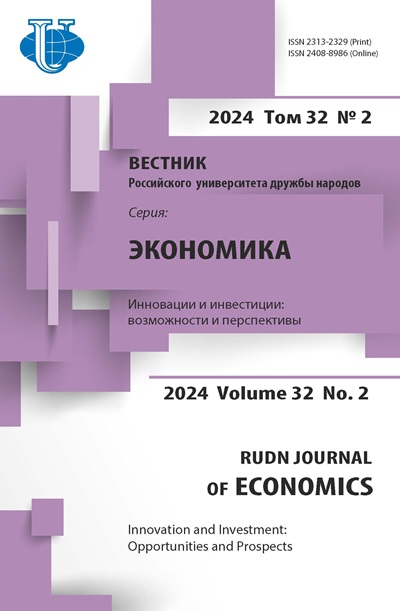FACTORS AND POTENTIAL OF BORDER COOPERATION OF THE REGIONS OF THE MEMBER STATES OF EEU
- Authors: Tkachenko MF1, Zhurova AV1
-
Affiliations:
- Russian Customs Academy
- Issue: Vol 25, No 3 (2017)
- Pages: 319-332
- Section: Articles
- URL: https://journals.rudn.ru/economics/article/view/17764
- DOI: https://doi.org/10.22363/2313-2329-2017-25-3-319-332
Cite item
Full Text
Abstract
This study suggests an authorial approach to assessing the potential of cross-border cooperation among the regions of the Big Three with the emphasis on economic and non-economic factors that have the greatest impact on the effectiveness of interaction between border regions and, as a result, the success of economic integration of Belarus, Kazakhstan and Russia in a wide range of areas.
About the authors
M F Tkachenko
Russian Customs Academy
Author for correspondence.
Email: marstav251280@gmail.com
Tkachenko Marina Fedorovna, Doctor of Economics, Head of Department of International Economic Relations, Russian Customs Academy.
Komsomolskii prospect, building 4, Lubertsy town, Moscow region, Russia, 140015A V Zhurova
Russian Customs Academy
Email: zhurovarta@yandex.ru
Zhurova Anna Vladimirovna, Candidate of Economics, Associate professor of Department of International Economic Relations, Russian Customs Academy.
Komsomolskii prospect, building 4, Lubertsy town, Moscow region, Russia, 140015References
- Anisimov A.M., Barinov S.L., Vardomsky L.B., Libman A.M. i dr. Prigranichnoe sotrudnichestvo regionov Rossii, Belarusi i Ukrainy: sostoyanie i perspektivy // Evraziiskaya economicheskaya integratsiya. 2013. 4(21) Noyabr. URL: https://eabr.org/upload/iblock/36e/n4_2011_6_4.pdf (accessed: 16.01.2016) (in Russ).
- Peril B.V. Prigranichnoe sotrudnichestvo na severo-zapade Rossii: sostoyanie i perspektivy // Upravlencheskoe konsultirovanie. 2005. № 4. S. 183—191 (in Russ).
- Martinez O.J. Border People. University of Arizona Press, 1994.
- Nijkamp P. Border regions and infrastructure networks in the European integration process. URL: http://citeseerx.ist.psu.edu/viewdoc/download?doi=10.1.1.458.91&rep=rep1&type=pdf (accessed: 18.06.2017).
- Nijkamp P., Rietveld P., Salomon I. Barriers in Spatial Interactions and Communications. A Conceptual Exploration // The Annals of Regional Science. 1990. Vol. 24. P. 237—252.
- Raich S. Grenzüberschreitende und interregional Zusammenarbeit in einem “Europa der Regionen”, dargestellt anhand der Fallbeispiele Großregion Saar-Lor-Lux, EUREGIO und “Vier Motoren für Europa” / S. Raich. Baden-Baden: Nomos, 1995.
- Rietveld P. Barrier Effects of Borders: Implications for Border-Crossing Infrastructures // EJTIR. 2012. № 12(2). P. 150—166.
- Schmitt-Egner P. Grenzüberschreitende Zusammenarbeit» in Europa als Gegenstand wissenschaftlicher Forschung und Strategie transnationaler Praxis. Anmerkungenzur Theorie, Empirie und Praxis des transnationalen Regionalismus / P. Schmitt-Egner. Baden-Baden: Nomos, 1998.
- Topaloglou L., Kallioras D., Manetos P., Petrakos G. A Border Regions Typology in the Enlarged European Union // Journal of Borderlands Studies. 2005. Volume 20. No. 2. P. 67—90.
- Van der Velde В., Martin R. So many regions, so many borders. A behavioural approach in the analysis of border effects // Paper prepared for the 37th European Congress of the European Regional Science Association, Rome, Italy, Aug. 26–29, 1997. Rome, 1997. 48 p.















